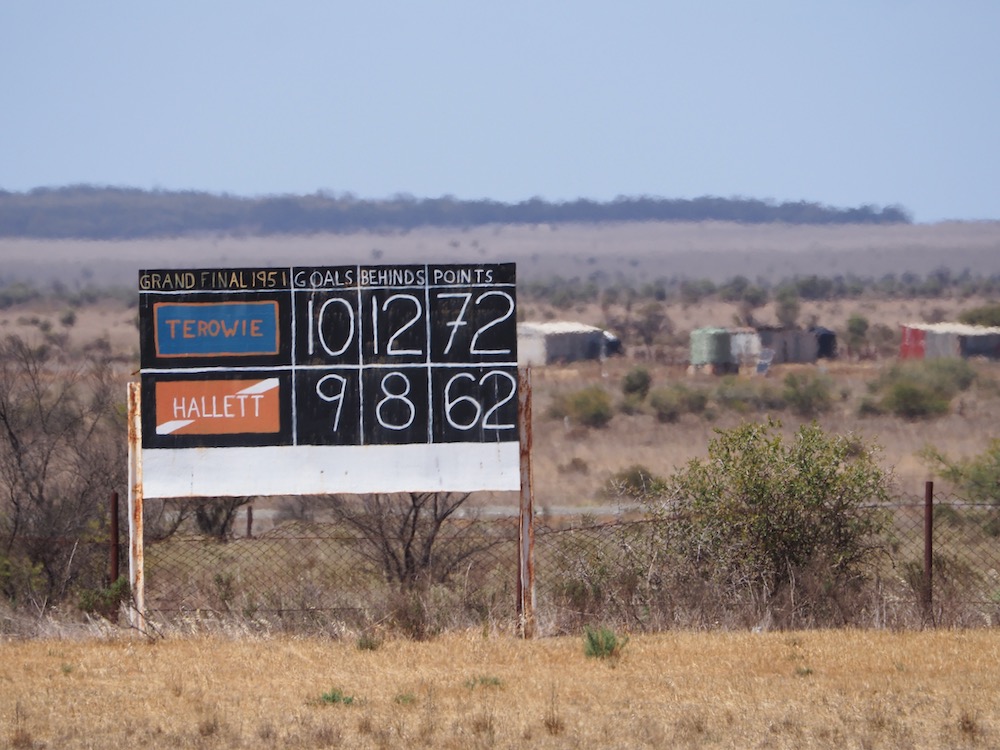
In the early 2000s from our homes in Williamstown (Victoria) and Fremantle (Western Australia) Vin Maskell and I started doing the same thing – taking photos of footy scoreboards.
We were alerted to the coincidence by mutual acquaintance and author of many fine footy books Paul Daffey, who said something like: “Do you know there’s a bloke on the other side of the country doing the same stupid thing as you?”
Soon we were partners and scoreboardpressure.com was born. The website features about 600 scoreboards from all over the place. We’ve photographed grand scoreboards like the ones at Adelaide Oval and the WACA; some really good looking boards at country and suburban ovals; some quaint examples and some of questionable style and beauty. And we’ve seen lots of numberplate changing mechanism. We’ve loved them all.
Change is inevitable and we’ve seen footy grounds where the scoreboard remains but the games have gone. We’ve also seen the steady adaptation of digital scoreboards. Our official position, and I quote from our constitution, is “…. yeah no we don’t like them that much but anyway what can you do?”
You can see the appeal of the digital scoreboard for the clubs – it’s run from the business side of the ground, probably with the timekeepers so there’s no need to convince someone to go over to the far side and look into the sun for the afternoon. It’s usually clear, can be quickly corrected and you can run multiple ads and messages on the screen. All these great advantages are, of course, void if there are power or technical issues. There’s also not much to like about a digital scoreboard when it’s turned off. There’s also not much to like about a scoreboard showing an ad when you want the score.

You can also see the downside of the traditional board. While I’ve seen brilliantly efficient operators at places like Goomalling, Lathlain Park, Mundijong and Rushton Park (all those places have now gone digital and I reckon at least one regrets it) and also at Hands Oval and Payne Park in Bunbury and a dynamic duo at Waroona. I’ve also seen some hopeless number changers.
I won’t name names but: at a prominent country league grand final the young scoreboard operator did a great job until the last quarter when some mates joined him on the podium and he got distracted. He missed a behind and I told him. As I wandered around the oval I noticed he’d missed another but I was too far away to let him know. When the siren sounded the displayed score was wrong, luckily it wasn’t a close game.
At a WA Wheatbelt oval a trio of young attendants gave their attention to everything but the game. During about 15 minutes of play I told them about a score they’d missed, as did the boundary umpire and a spectator standing by his car. I left wondering what chaos was to come.
Often the move to digital comes with the demolition/removal of the old scoreboard. A visit to Terowie in South Australia’s Mid-North provided an answer.

At the historic town’s long abandoned recreation ground is an artwork/scoreboard depicting the score from the 1951 grand final when the locals beat Hallett in their only season in the North Eastern Football League.
So footy clubs if you feel the need to go digital why not make a spectacle of your traditional scoreboard… put up a famous grand final score or a victory over your biggest rival or your record score or the year of formation or your premierships.
For example at new-look East Fremantle Oval, where you can see the old scoreboard for miles, you could put up the score from the 1979 grand final and the record crowd. EF 21.19 (145) SF 16.16 (112). Attend: 52 781. How good would that look! Oh, that’s right. You pulled the scoreboard down didn’t you?

There’s an arts aspect to this as well as sporting and cultural history – grants might be on offer.
Let’s keep the score on the board.
